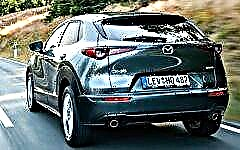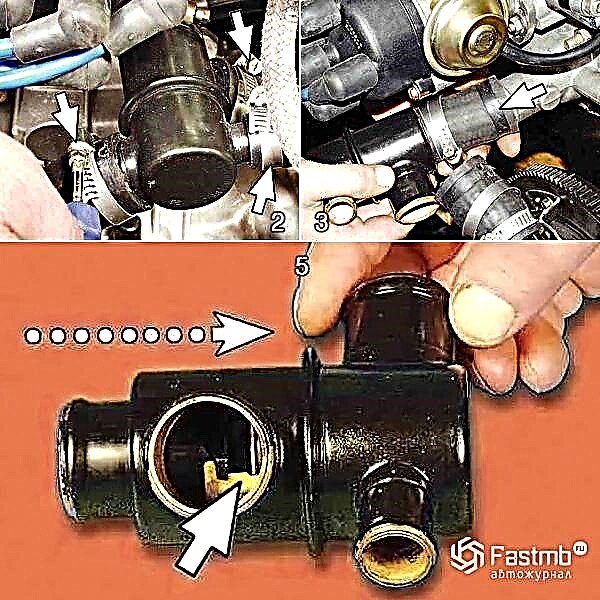

The content of the article:
- How to keep a car charger alive in winter
- What to do in order for the battery to fully deplete its technical resource
- How to properly reanimate a car battery
- Proper handling of used batteries
- How to avoid battery problems
A car battery, or battery, can quickly and easily turn a vehicle into real estate. And the reason for this trouble lies not in the battery itself, but in the dismissive attitude of the owner. So, according to AUTOSTAT polls, only 2% of drivers have an idea of the battery installed under the hood. The rest do not know the technical characteristics and cannot even name the manufacturer of the device.
Another important point is the ability to handle the battery. The following life hacks will help to keep the battery working.
How to keep a car charger alive in winter

The cold season significantly increases the load on the battery. This is due to the difficult starting of the engine, increased energy consumption for heating the passenger compartment, glass, engine oil. So, the battery does not have time to charge even on long trips. Modern anti-theft systems also add it, especially when the car is idle for a long time.
Attention! If the car is left out in the cold for several days, the density of the electrolyte decreases and the resulting ice destroys the cans. In this case, the battery can no longer be saved - you need to buy a new one.
To keep the battery working in winter, you need to follow several recommendations:
- periodically start and warm up the car;
- remove the battery and bring it home. But often this cannot be done, since temperature drops contribute to the destruction of the structure of the plates;
- charge the device from the mains.
These tips will help you save money on buying a new battery if the car owner doesn't have a warm garage. It also helps to save money by overcoming laziness, because many vehicle owners do not want to carry a heavy device home, and then also restore the settings of on-board devices.
A rational solution to the problem of transporting the device will be the purchase of a special casing for the battery, which retains heat. But it is not effective when the vehicle is idle for a long time. It is necessary to remove the insulation in the summer, otherwise overheating will lead to the evaporation of the electrolyte and destruction of the plates.
Attention! Disconnecting the battery will reset the adaptive engine settings, which will cause increased fuel consumption the first time after installing the battery and starting the engine. But this is a reasonable price to pay for keeping the charger working.
What to do in order for the battery to fully deplete its technical resource

Most car battery manufacturers indicate a 5-6 year life. But in fact, more than 80% of devices have not been working for more than three years. The reason is the lack of proper maintenance, which rapidly shortens the life of the power supply.
The "Achilles' heel" of the battery is the voltage in the vehicle's network. If it is higher than the regulated one, then the electrolyte level decreases rapidly. This is true for both summer and winter seasons. Power surges can bring the battery to a state of extreme wear in a few weeks.
To avoid such a nuisance, you must periodically measure the voltage with a multimeter. Some car models are equipped with voltmeters, which greatly simplifies the life of the driver. The readings of this device cannot be ignored.
The voltage is measured after driving with the engine running, when the generator is recovering the energy used. The permissible limit is 14.2 volts. Anything above will quickly kill the battery. Battery performance is also adversely affected by undervoltage, which leads to rapid discharge.
To ensure constant monitoring of the mains voltage, you can connect a voltmeter to the cigarette lighter. More accurate diagnostics is provided by connecting a load plug, which simulates daily loads, shows the behavior of the battery. But for the procedure, you need to go to the service station.
Another important point is maintaining the electrolyte level and ensuring the desired density. The amount of substance is regulated by the marks on the cans min and max. The optimal border is at an equal distance from both marks. But if they are not there, then the electrolyte should be about 10 mm higher than the plates in the cans.
Attention! A low level of reagent will expose and break the plate. The result is a partial loss of capacity by the can or its complete failure.
The density of the electrolyte is maintained by periodic recharging. This task is solved with the help of frequent trips or restoration of energy resources from the network - manually. This is especially true for the winter period.
It is believed that when the battery is discharged to zero, it loses part of its capacity forever. But this is only relevant for old-style batteries or those that have been in use for several years. Models up to a year are not afraid of complete discharge and quickly restore functionality. It should be remembered that an easy start of the engine provides a 50% charged battery.
How to properly reanimate a car battery

Officially, the battery cannot be repaired. The most famous way to restore performance is to top up with water. For this, only distilled liquid is used. It is also advisable to add an anti-scale additive. The mixture for recovery is prepared in advance in a separate container. After topping up, it is necessary to charge and discharge the energy block several times.
If the car is mothballed in the garage, store the battery in a cold room, such as on a balcony. In this case, the device should be recharged from the network no more than once every 3 months. Frequent recharge of the removed device will lead to sulfatization and failure of the cans.
Attention! If the electrolyte begins to bubble during charging, the device must be disposed of.
In the case when the battery energy reserve is consumed by the side lights in winter, the following steps must be taken to start the engine:
- turn off all devices that are started by default;
- blink the high beam with a delay of a few seconds;
- after a while try to start the engine.
At the same time, the battery is not always to blame for the loss of charge - often the problem lies in network or generator malfunctions. Diagnostics at the service station will help to identify it. In order not to finally finish off the battery, you must entrust the resuscitation to an experienced specialist.
Another common way to revive the battery is "lighting" from another car. To do this, you need a set of jumper cables called crocodiles. They are attached to the terminals and transfer the charge from the charged battery to the "dead" one.
To ensure safety, it is necessary to carry out all operations with rubber gloves and goggles. But in reality, few of the drivers have these means of protection, so you just need to be extremely careful not to touch the conductive parts with an unprotected body. The "lighting" algorithm itself provides for the following actions:
- connecting one end of the red (positive) jumper cable to the red positive (+) position of the discharged battery;
- connecting the other end of the red (positive) jumper cable to the red positive (+) position of the charged battery;
- connecting one end of the black (negative) jumper cable to the black negative (-) position of the charged battery;
- connecting the other end of the black (negative) jumper cable to an unpainted metal part in the machine that needs to be revived. This will prevent sparking;
- now you need to start the car and leave it to work for about 5-10 minutes;
- then the engine is shut off and the cables are removed in the reverse order described above.
It is also necessary to ensure that crocodiles do not touch the metal surface.
You can start the car and let it idle for at least 20 minutes. If the engine does not start, repeat the procedure in the same sequence.
Proper handling of used batteries

Battery is a device containing a toxic, chemically active substance. The electrolyte is hazardous to human health and harmful to the environment. Therefore, extreme care should be taken when handling lead-acid batteries. Topping up water will be carried out as carefully as possible in compliance with safety measures.
Attention! It is strictly forbidden to disassemble the used battery, drain the electrolyte.
Used batteries, according to environmental standards, are classified as high-hazard scrap. Therefore, it is unacceptable to dispose of it together with solid household waste. The device should be handed over to specialized collection points. The proceeds will partially cover transportation costs.
Do not leave batteries in places accessible to children, trash chambers or near garages, as even electrolyte vapors are dangerous.
How to avoid battery problems

You can minimize the hassle of a car battery. This is done at the acquisition stage. The classic rule here is that the greedy pays twice. So, cheap batteries will increase the likelihood of unforeseen situations on the road and cause a lot of problems in winter.
To avoid this, remember the following:
- a used battery cannot be reliable in ensuring the stable performance of the car;
- buy batteries only in stores;
- purchase products from trusted manufacturers;
- do not chase fashionable, incomprehensible designations - often these are empty abbreviations aimed at attracting buyers.
Another reason in favor of a battery from a well-known brand is improved resistance to low temperatures.
Summary
In fact, laziness and lack of knowledge about proper maintenance lead to unpleasant surprises with the battery. Another important factor is the desire to save money, which translates into an increase in the consumption of time, the need to buy a new battery. The above life hacks will help you avoid problems with the operation of the power unit and really save money.











